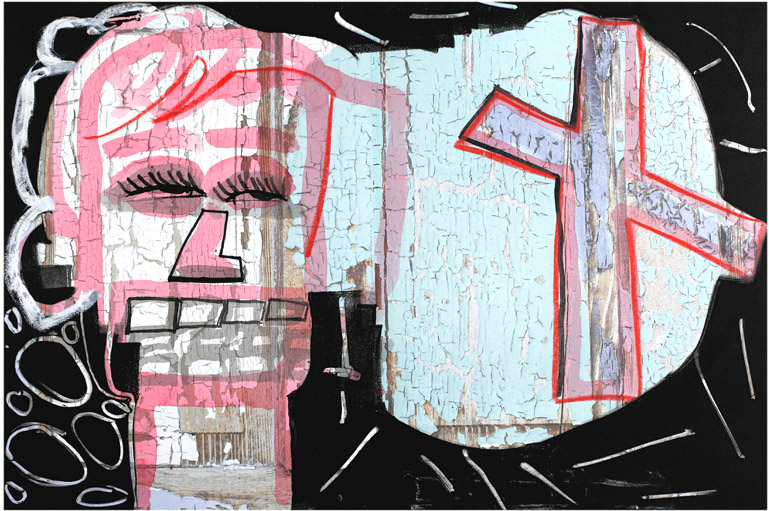
Redefining beauty: the art of Tyree Guyton and Sam Mackey
You can’t talk about the last 25 years of art in Detroit without talking about Tyree Guyton. His ever-expanding, internationally-acclaimed east side neighborhood Heidelberg Project (the subject of an upcoming Knight-funded retrospective exhibition at the Charles H. Wright Museum of African American History) has delighted, haunted, and inspired visitors since 1986. His colorful dots and boldly-drawn faces continue to enliven many of the city’s abandoned, decaying structures, and when he paints the word “God” on them, they are improbably transformed into sacred spaces. Collected by the DIA and exhibiting every day in the streets, he draws an important line between Detroit’s legitimized and underground art worlds.
The exhibition Tea for Two, which opens tonight at the College for Creative Studies (CCS), encourages viewers to see Guyton’s art in relation to another’s: his grandfather, the late Sam Mackey. Guyton encouraged Mackey, a house painter, to take up art in his late 80s, and he did so with gusto, creating his own work and contributing extensively to the Heidelberg Project. I asked Guyton over email to discuss the show and his relationship with Mackey.
Matthew Piper: Who was Sam Mackey? How did he influence you? How did you influence him?
Tyree Guyton: Sam Mackey was my grand-dad, my best friend. He gave me a paintbrush when I was 9. It was reciprocal. He gave me so much love and affection. He also gave me attention. He and I would hang out together when he was in his 80s and 90s. We would go to art shows, fly to NY for our shows.
MP: Can you describe some of the work included in the show, both his and yours?
TG: One thing that really stands out in this show is color. Grandpa loved color. So do I. Color. Magic is the word I would use to describe this show. He created magic. He redefined beauty.
MP: Can you talk about your grandfather’s participation in the early days of the Heidelberg Project?
TG: Absolutely. We had such a wonderful time creating together. Once again, I want to point out that we are talking about a guy that was in his 80s and 90s. Mistakes happened that became a part of the creation of Heidelberg and that also rubbed off on me. He would also go up the ladder and paint but we wouldn’t let him go too high though. The last year of his life playing a part in [the Heidelberg Project], he also found new energy. The project gave him life-to live for it.
MP: What kinds of connections (thematic or formal) do you see between his work and yours?
TG: One thing that stands out is energy. His energy, my energy, fusing the two to create a new energy. I do believe people will see it in the show. Something else that he would say all the time is that he could see the wind blow. He told me that in time it would come to me and that I would be able to see it and understand it.
MP: At this point in the story of art in Detroit, your work is respected and loved, even canonized. Do you hope that this new show will illuminate your art in new ways? How?
TG: I don’t hope anymore. I know it will. At the same time I do believe I am bringing something new to the table and questioning, “What is Art today?” CCS has given me a playground to go in and play.
Tea for Two opens March 25 from 6:00 – 8:00 pm and runs until April 30 at CCS’ Ford Campus Center Galleries: 301 Frederick Douglass, Detroit; 313.664-7800; http://www.collegeforcreativestudies.edu/center_galleries.
Recent Content
-
Artsarticle ·
-
Artsarticle ·
-
Artsarticle ·

